Important Update:
UPS has updated their APIs to use a new security protocol, OAuth 2.0.
If you connected your UPS account to ShipperHQ before September 2024, you’ll need to re-authorize the connection to UPS to continue to receive negotiated UPS rates and services via ShipperHQ. This process only takes a few minutes to complete.
UPS will be retiring the old authentication services soon. After that date, you will no longer be able to return negotiated UPS rates until you re-authorize your UPS account in ShipperHQ. Contact us with any questions or if you need assistance with this update.
Overview
If you have aUPS Ground with Freight Pricing (GFP) contract with UPS and want to connect it to ShipperHQ please follow the steps below to setup and activate your account.
In addition to UPS Ground with Freight Pricing, ShipperHQ supports an extensive set of UPS services including domestic and international small package.
Setting Up your UPS Ground with Freight Pricing Carrier
UPS Ground with Freight Pricing requires a specific contract in place with UPS. You’ll need to have a TForce Freight account and then contact UPS to sign up for UPS Ground with Freight pricing. UPS Ground with Freight Pricing is not the same as UPS LTL Freight, now TForce Freight
The first step is to turn on LTL Freight as an advanced feature.
1. Click Advanced Features from the ShipperHQ dashboard (left sidebar).
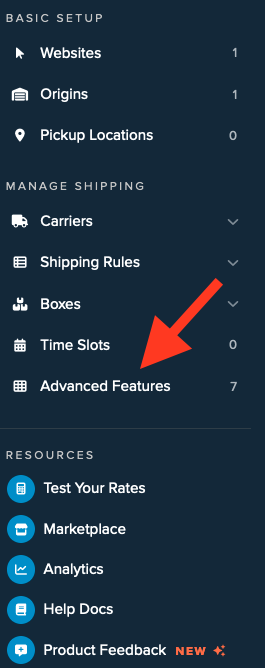
2. Toggle the switch on the LTL Freight feature to enable it. You will then need add and validate the carrier.
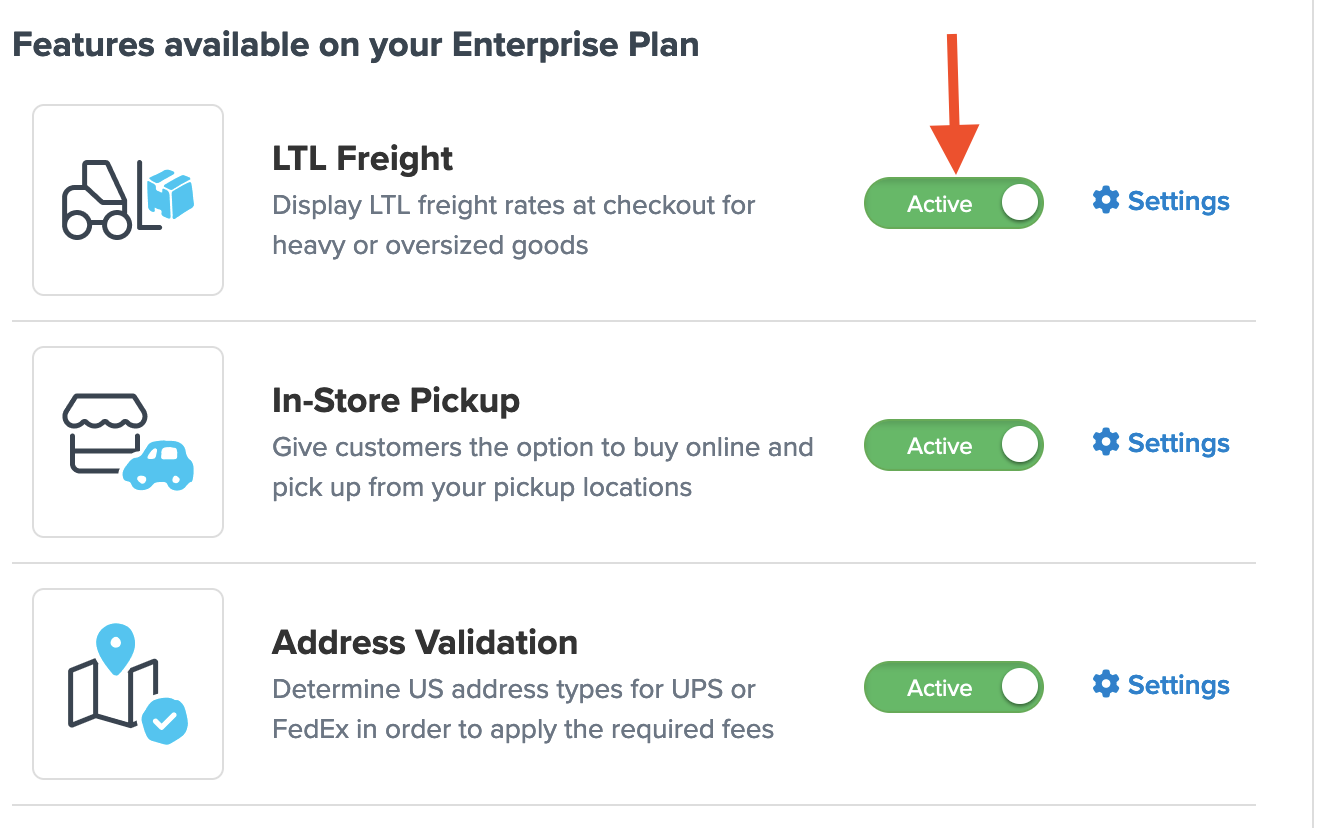
3. Go to your ShipperHQ dashboard, select Carriers and “+ New”

4. Select See All Live Rate Carriers and search for “UPS Ground”. If you do not heave the Freight carriers feature enabled you will be prompted to enable in this popup.
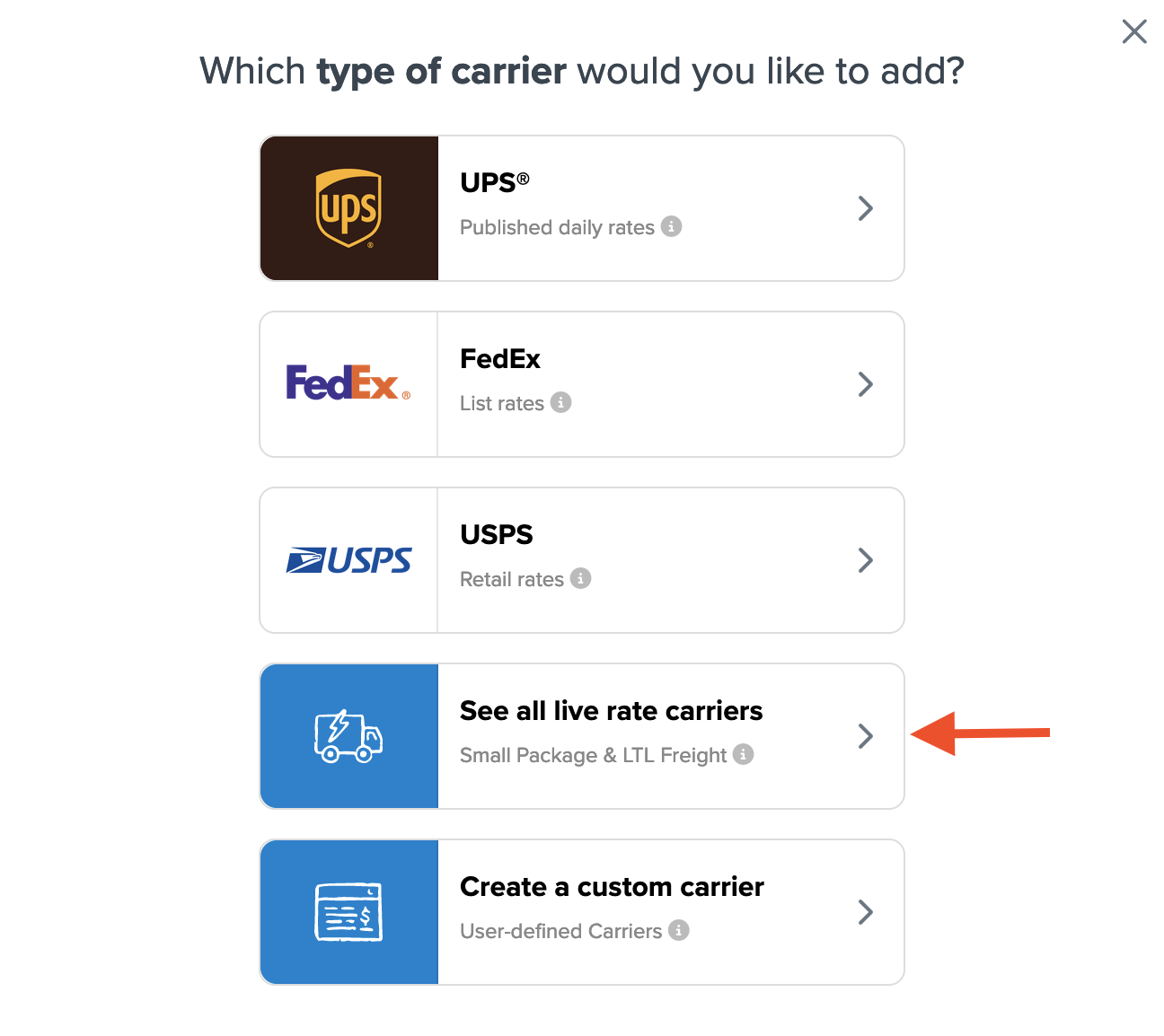
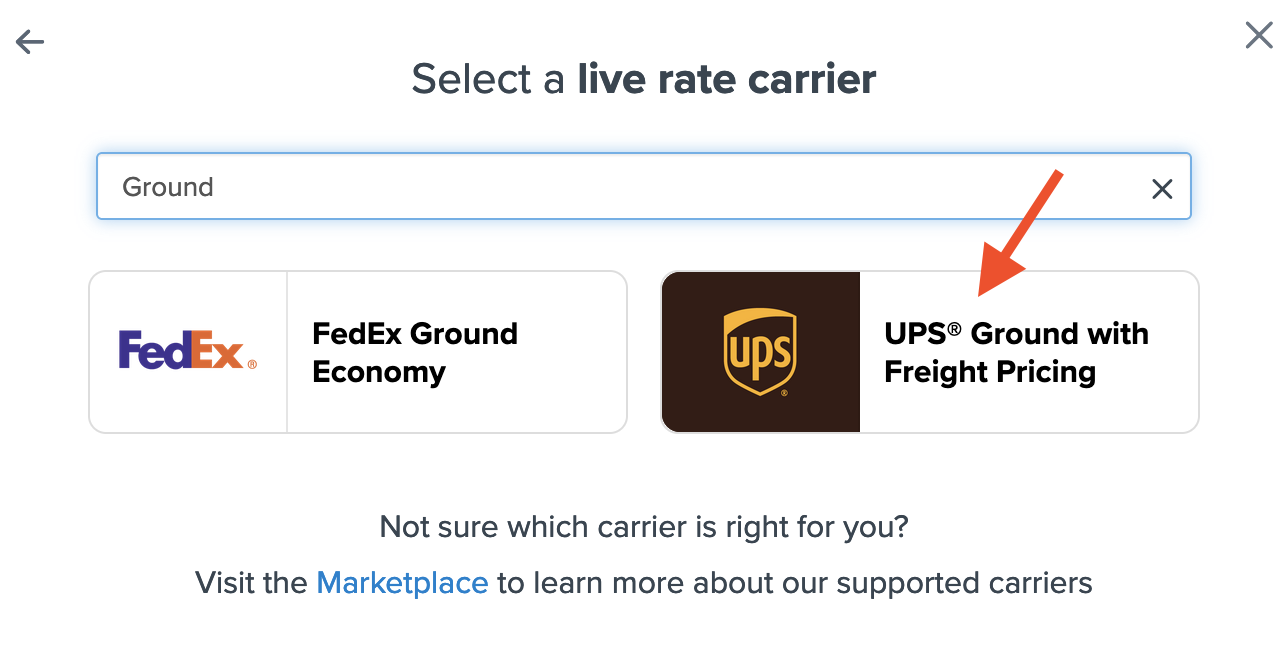
Connecting to Your UPS Account to Use Your Negotiated Rates
To provide shipping quotes using your UPS Account rates, (sometimes called Negotiated Rates), or to use contract-only UPS services, you’ll need to take a few additional steps.
Required Information
- An active shipping account with UPS connected to a UPS.com account (follow this guide by UPS to connect your UPS account to your UPS.com account if not already done)
- Your UPS.com User ID
- Your UPS.com Password
Validating Your UPS Account
Once you have the required account information, you can connect your ShipperHQ account to your UPS account with a few steps.
This can be done either when adding UPS as a new carrier or, if UPS is already installed, by clicking the Enter Credentials button shown when editing your carrier in ShipperHQ.
1. Enter your UPS Shipping Account Number in the required field.
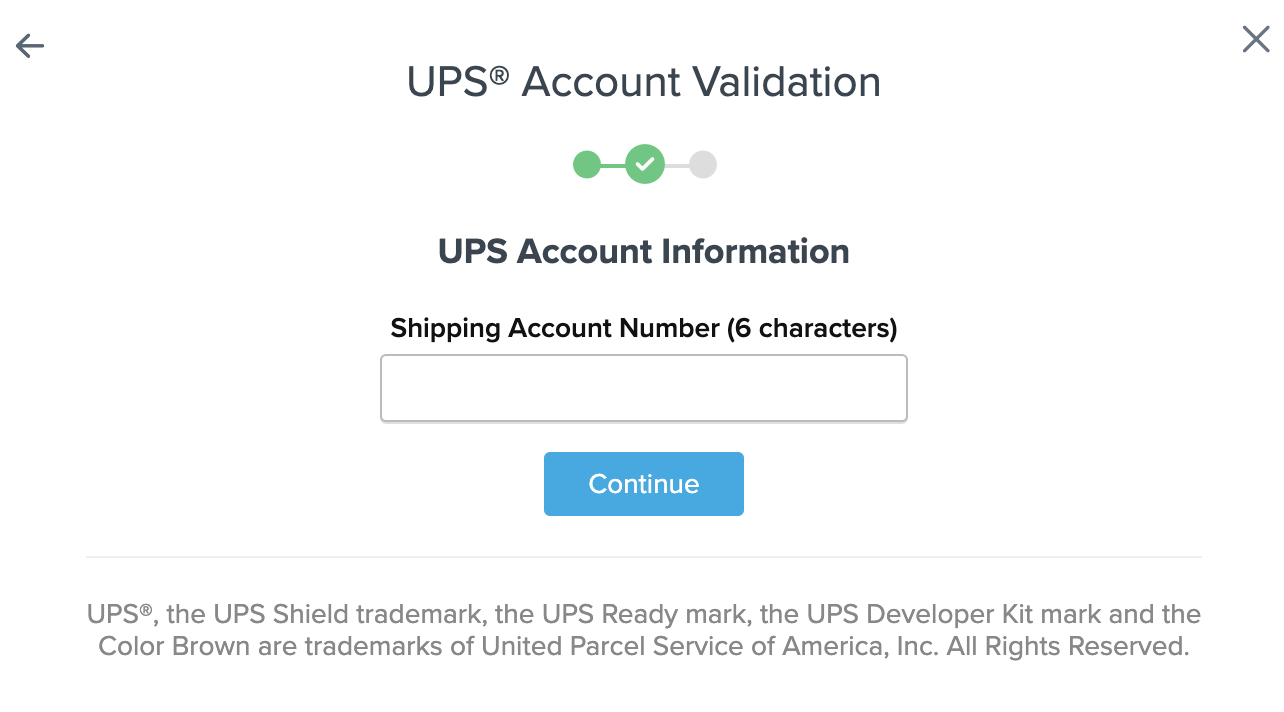
2. Select Enter Credentials to proceed
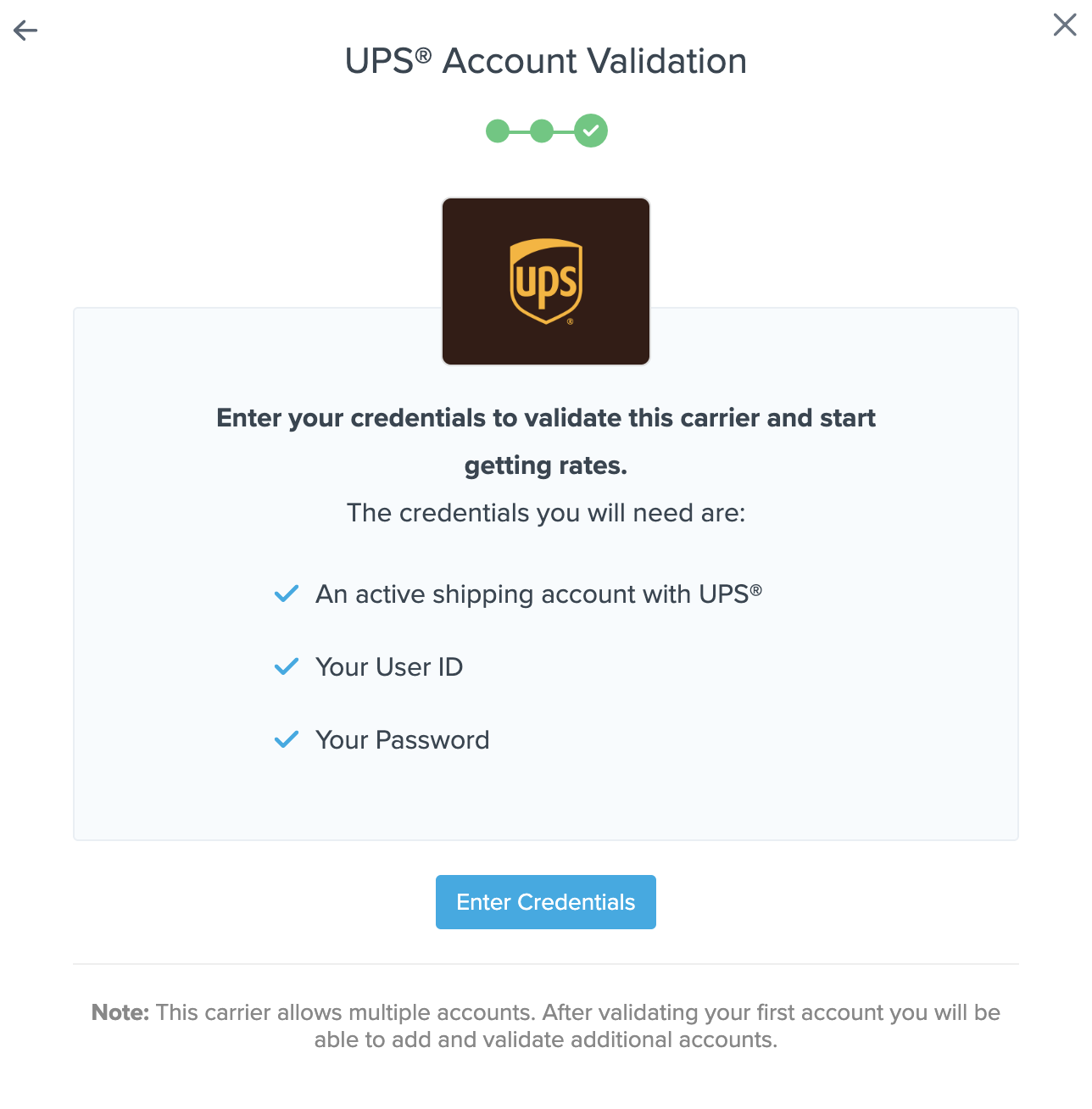
3. When the UPS login screen appears, simply enter your username or the email address associated with your UPS account and accept the terms of use.
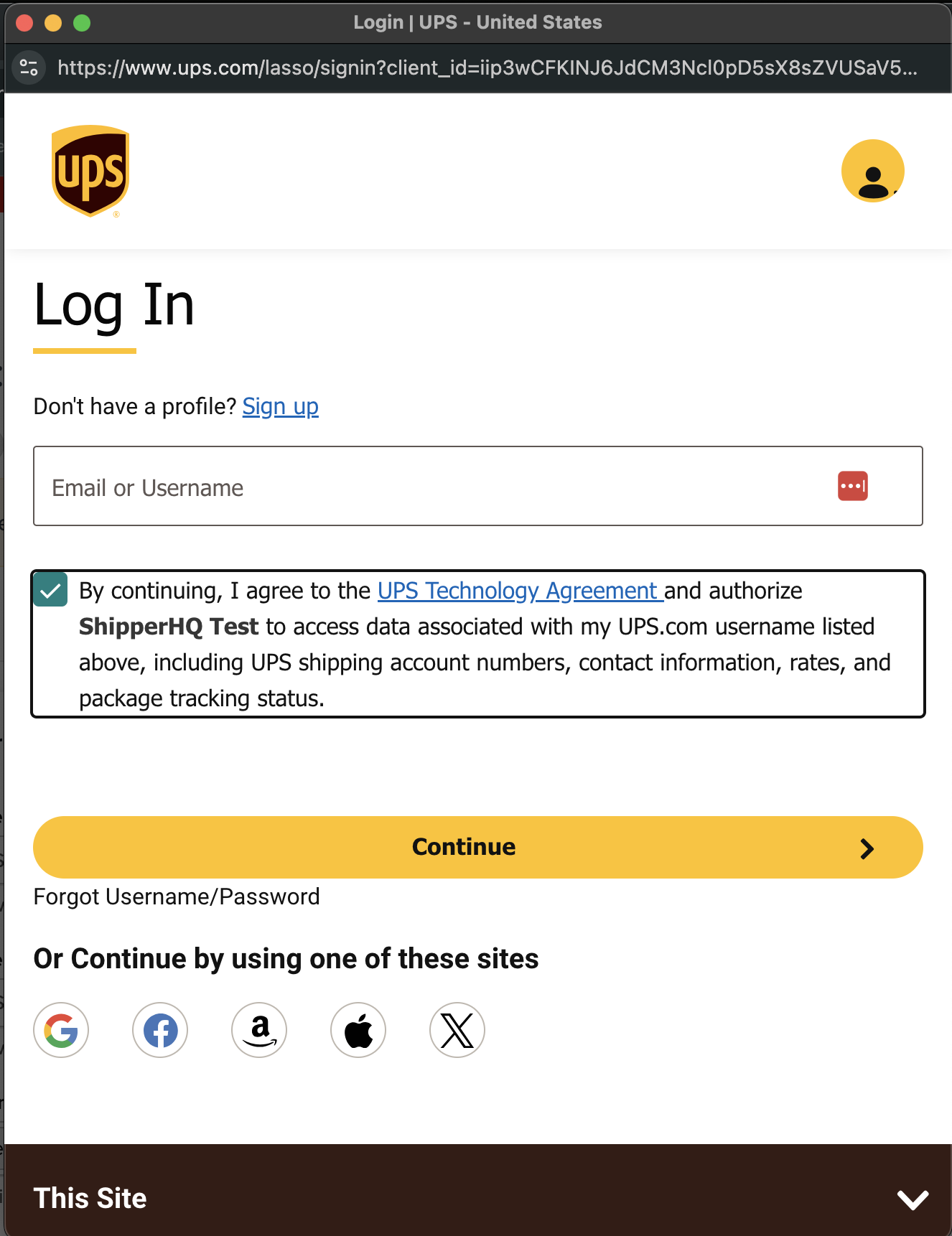
4. On the next screen, enter the password associated with your UPS account.
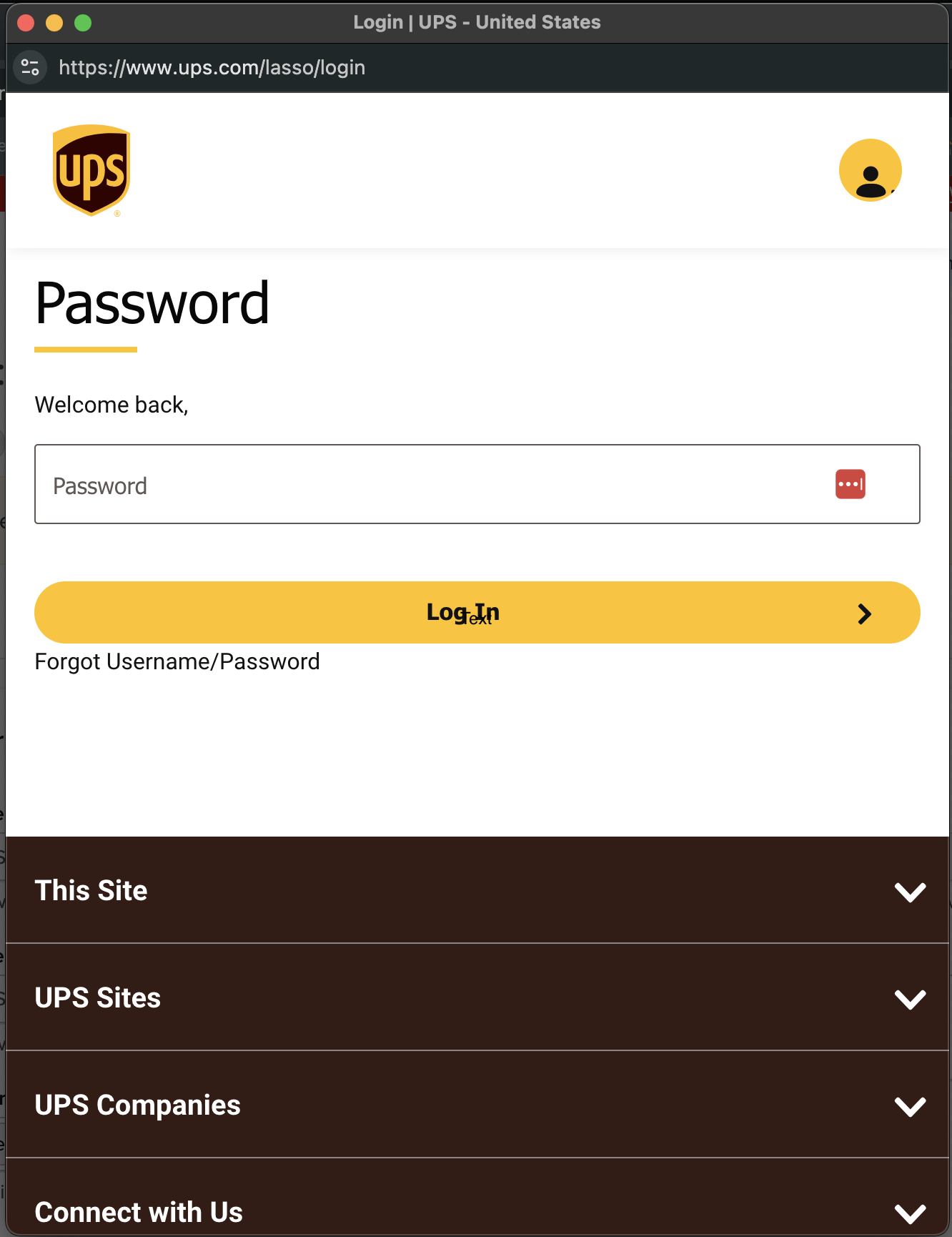
Once validation is complete, you can enable the carrier right away (this will turn on rates immediately before making configuration adjustments) or choose to Configure your carrier and enable it later.
- If you receive an error or your credentials are not valid, review our Troubleshooting details.
- Once validation is complete, you are presented with:
- The option to enable your carrier right away. (Enabling your carrier at this time turns its rates on immediately even before you have made any configuration adjustments to it)
- Begin to configure – continuing with this button redirects you to the carrier’s configuration page.
UPS density based pricing
If your UPS account requires density based pricing or you’re getting this error: “Shipper has density pricing. Handling unit dimension required” then you will need to tick the switch under account settings. Very few UPS LTL accounts require this, we would advise that you leave it unticked unless you see the above error or UPS LTL tell you to tick it.
UPS describes this feature as: Density based rates are discounted based upon product dimensions, rather than freight classifications. Density based pricing is setup when customers commingle multiple freight classes on shipments.